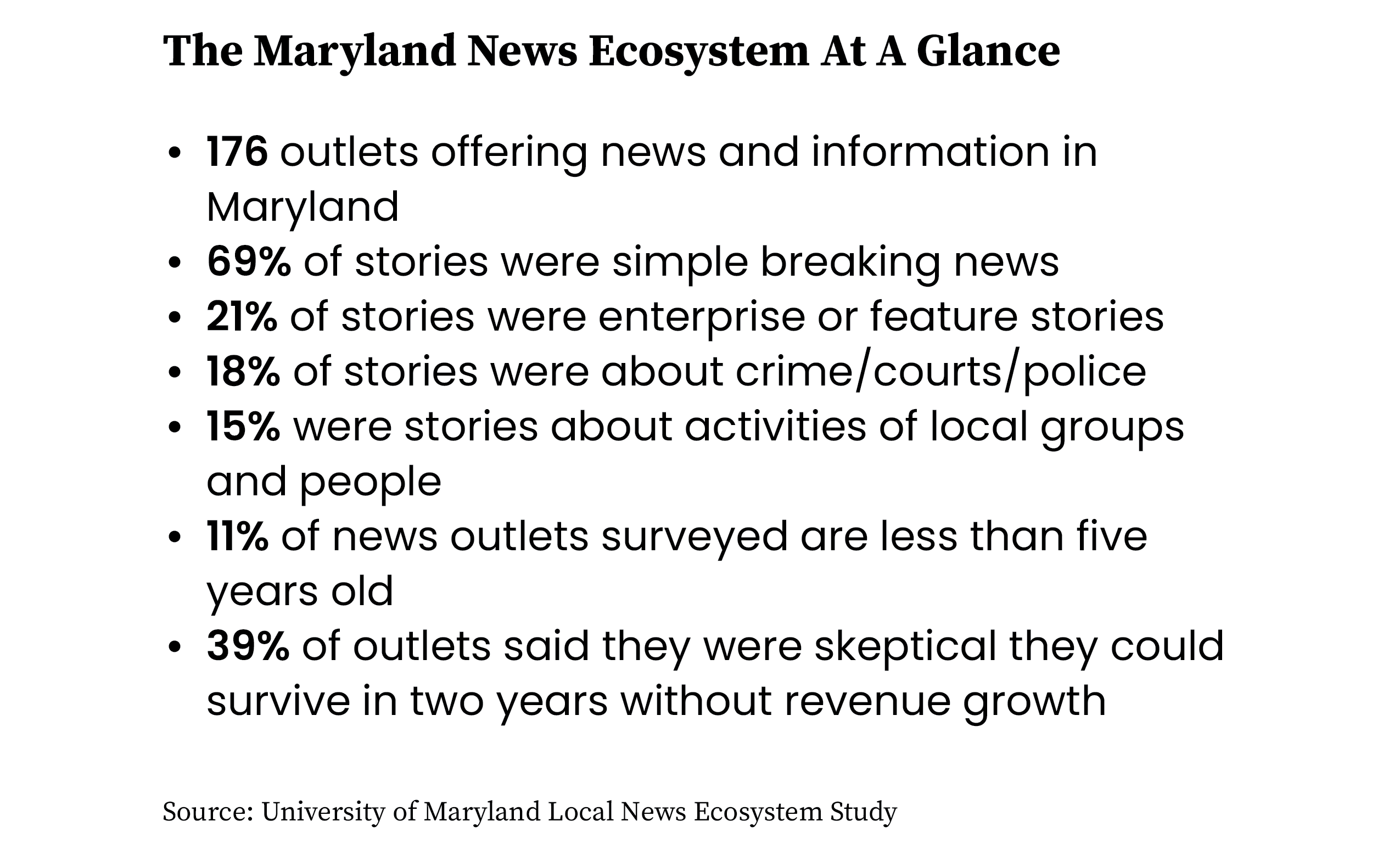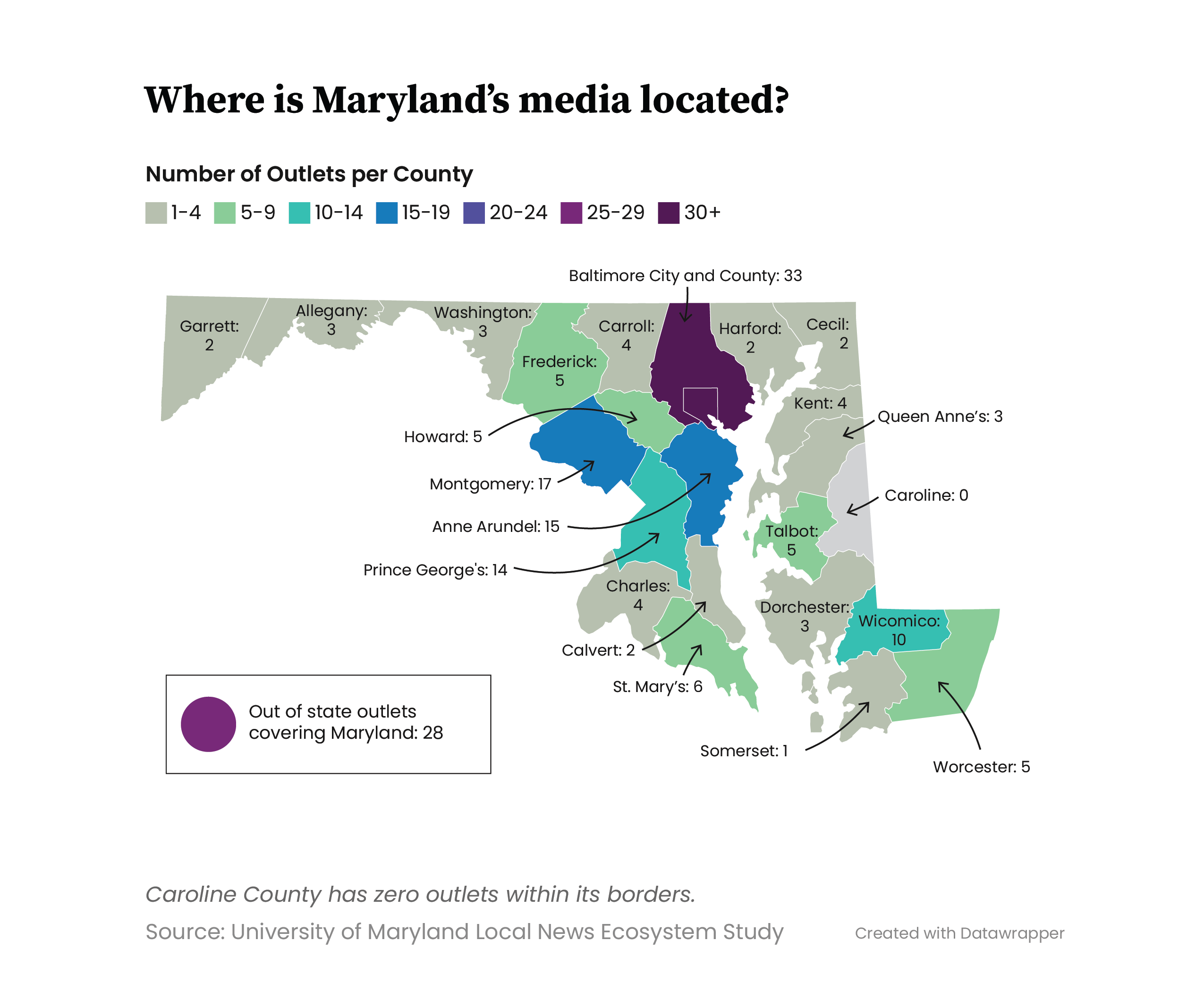
On April 19, the University of Maryland released its first-ever Maryland Local News Ecosystem Study, which examines the state of local news in Maryland. The study, conducted by UMD’s Philip Merrill College of Journalism, was supported by grants from UMD’s Maryland Democracy Initiative (MDI), led by Lena Morreale Scott, senior faculty specialist in the College of Education, as well as grants from the Andrew and Julie Klingenstein Family Fund through the Merrill College’s Local News Network and from Merrill College.
The report includes a landscape assessment aimed at identifying all the outlets offering news and information in the state; a content analysis of those outlets offering news; a comprehensive survey of editors and news directors regarding their needs, challenges, staffing and finances; and thumbnail descriptions of each local news outlet in Maryland.
“Local news is vital to an informed citizenry and a healthy democracy,” Merrill College Dean Rafael Lorente said. “The college’s researchers have sounded an alarm for the residents of Maryland. Our local news ecosystem is suffering and needs help now. They have also provided the rest of the country with a cookbook for how to examine their own states.”
“Our democracy depends on ‘we the people’ to select our leaders, to hold them accountable, to join together and to take informed actions to improve our communities,” said Scott. “Strong and reliable local news provides people with essential information that matters, close to home.”

The study identifies 176 outlets producing news and information about the state—ranging from conventional TV, radio stations and newspapers to neighborhood blogs and Facebook pages— of which roughly 156 can be described as news or journalistic.
Key findings of the study include:
- One county in the state, Caroline, has no news outlets. Eight counties have three or fewer.
- Most outlets are small. Six in 10 Maryland news survey respondents said they have news staff of five people or fewer. The majority have overall budgets of less than $250,000.
- While most are solvent now, four in 10 respondents said they could not survive in two years without growing their revenue.
- Most of the news produced in Maryland is spot or breaking news triggered by official announcements. Just two in 10 stories were features or enterprise work.
- Crime was the most covered topic in the state, followed by news about local groups and people, local government, then business and schools.
The study was led by Tom Rosenstiel, Eleanor Merrill Scholar on the Future of Journalism and Professor of the Practice at Merrill College, and Jerry Zremski, director of the college’s Local News Network.
Students Nira Dayanim, John McQuaid, Loretta Pulwer and Khushboo Rathore were part of the research team. Alum Jenna Cohen prepared the graphics. Student Joel Lev-Tov prepared the landscape study.

The goal is that the first study sets down a useful baseline, and the intention is to repeat the study in future years, to track what has changed and expand it to include what may have been missed. The goal is also for the study to serve as a model for journalism schools elsewhere to conduct similar research in their states.
The findings of the report were revealed at “Solving the Local News Crisis,” a two-day summit Thursday and Friday about the local news crisis in and around Maryland, which was presented by the John S. and James L. Knight Foundation, The Baltimore Banner, Merrill College and the MDI.
This article is adapted from a press release that first appeared on the Philip Merrill College of Journalism’s website.



